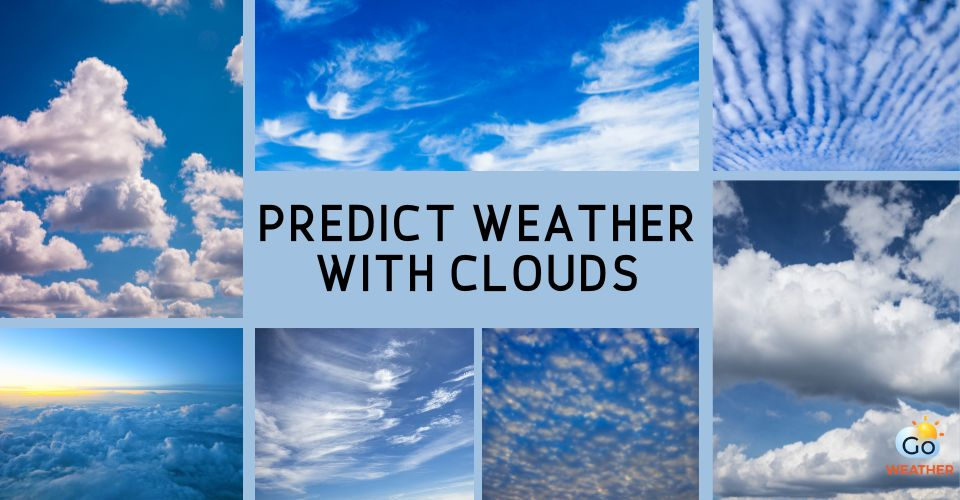5+ Types of Winds on Earth & Interesting Facts You Should Know
Winds play a crucial role in the Earth's weather system. The weather may be affected a lot by changes in wind speed and direction. That is why, in the weather forecast, you often see forecast details about wind speed and direction. Keep reading to explore great things that you might have never known about winds, including what causes wind, types of winds on Earth, and more.
.jpg)
Winds play a crucial role in the Earth's weather system
What is the Wind?
The wind is nothing but the movement of air. It results from the sun's uneven heating of the earth's surface and the rotation of Earth. A detailed explanation of the causes of wind is provided in the following part of this writing.
Speed and direction are two necessary factors that specify wind. Wind speed is simply the speed of the air movement from one place to another place.
Meanwhile, the wind direction is the direction from which the wind blows. A northern or north wind, for example, originates in the north and blows from north to south. You can learn more about weather forecast and wind direction for better understanding!
.jpg)
Speed and direction are two necessary factors that specify wind
What Causes the Wind to Blow on Earth?
As mentioned previously, wind results from the sun's uneven heating of the Earth's surface.
In other words, differences in atmospheric pressure cause the winds to blow. The atmosphere warms as the sun heats the Earth's surface.
While some parts of the Earth are always warm because they get direct sun rays all year round (the areas around the Equators, for example), other areas get indirect sun rays and have a colder climate (the areas near the poles, for example).
Warm air rises because it is lighter in weight than cold air. The rising warm air is then replaced by cool air moving in. This movement of air is what causes the wind to blow.
.jpg)
The wind is nothing but the movement of air
In general, winds blow from areas of high pressure to areas of low pressure. We all know that the areas at and around the Equator receive more direct sun rays than any other Earth place.
That means the sun warms the water and land in the Equatorial areas more than anywhere else on the planet. Warm air from there rises higher in the atmosphere and travels toward the poles. And this is a low-system area.
Simultaneously, when the heated air rises so high and migrates to the poles, then it will be replaced quickly by the cooler, denser air that passes across the Earth's surface toward the Equator. This is called a high-pressure area.
The boundary between high-pressure and low-pressure areas is called a front. And according to National Geographic, different types of winds on Earth and weather patterns result from the complex relationships between fronts.
.jpg)
Winds blow from areas of high pressure to areas of low pressure
Types of Winds on Earth
There are various kinds of winds. As per National Geographic, Earth has 5 major wind zones, including trade winds, the westerlies, polar easterlies, horse latitudes, and the doldrums.
Meanwhile, there are 6 different wind types on Earth, as stated by Earth Eclipse: trade winds, monsoon winds, polar easterlies, the westerlies, doldrums, and local winds.
Each type of wind on Earth has its characteristics; it originates from and blows to different areas on the planet.
.jpg)
What are the type of winds?
Trade winds
The powerful prevailing winds blowing from the east to west across the tropics in the direction of the Equator are known as trade winds.
In the Southern Hemisphere, the trade winds blow primarily from the southeast, while in the Northern Hemisphere, they blow primarily from the northeast.
Continental trade winds (trade winds forming over land) are drier and warmer than maritime trade winds (trade winds forming over the ocean).
.jpg)
Trade winds
They have played a significant role in the history of communication, exploration, and, of course, trade (as its name suggests).
Ships relied on this type of wind to establish reliable and fast routes across the Atlantic and Pacific Oceans. Even these days, shipping is still reliant on trade winds and the ocean currents they create.
However, the majority of tropical storms, including cyclones, hurricanes, and typhoons, form as trade winds.
Polar easterlies
The second one of these 5 main types of winds is Polar easterlies, which are also known as Polar Hadley cells.
They are dry, cold prevailing winds blowing from the high-temperature areas of the polar heights at the north and south poles to the low-pressure areas of the westerlies at high latitudes.
.jpg)
Polar easterlies
Polar easterlies propel from east to west. They develop when the air over the poles cools. This cool air then falls to the surface and spreads out. The Coriolis effect then causes the air to flow westward as it moves away from the poles.
These winds are referred to as easterlies because they originate in the east. This type of wind is generally irregular and weak.
|
Related: |
Westerlies
As you can guess from its name, westerlies are prevailing winds coming from the west and blowing to the east. They form in the middle latitudes between 30° to 60°.
The westerlies mainly come from the southwest in the Northern Hemisphere and northwest in the Southern Hemisphere.
The Westerlies are found strongest in the wintertime when the pressure is low over the poles. On the other hand, they tend to be weakest during the summer when the pressure over the poles is higher.
.jpg)
The westerlies
Westerlies, together with trade winds, have been used by sailing ships (especially during the Age of Exploration) to navigate trade routes across the Atlantic and Pacific Oceans.
This is because the winds produce strong ocean currents on the oceans’ western sides in both the Northern and Southern Hemispheres by the “western intensification” process.
Doldrums
The place where trade winds of the Northern and Southern Hemispheres meet is called the ITCZ (intertropical convergence zone). The area surrounding the ITCZ is known as the doldrums.
.jpg)
Doldrums
In the doldrums, the prevailing winds are very light, and the weather is exceptionally calm.
The ITCZ runs parallel to the Equator. The sun heats the equatorial zone, causing air masses to rise and migrate north and south, creating low-pressure doldrums.
Horse latitudes
This is also the last one in this list of major types of winds on Earth, according to National Geographic.
.jpg)
Prevailing winds at the horse latitudes
Horse latitudes are a zone of warm, dry air between the westerlies and the trade winds, existing in both the southern and northern hemispheres. Horse latitudes are around 30 and 35° north and south.
At the horse latitudes, the prevailing winds are generally light. Even strong winds are frequently brief.
Other types of winds on Earth
Sometimes, you can see terms like local winds (sea and land breezes, valley and mountain breezes, for example), periodic winds (monsoon winds, for example), and more. They are also types of winds on Earth.
Other Interesting Facts About Winds
Continue reading to find out some facts you may have never heard of about winds:
-
Winds can be known as breezes, gales, storms, or hurricanes, depending on their strength.
-
A gale is described as a wind speed of 32 to 63 mph (miles per hour). It is a breeze with a wind speed of 4 to 31 mph.
-
Short bursts of wind traveling at high speeds are called gusts.
-
With the help of sails, sailing ships utilize the wind to propel their movement.
-
All of the early wind turbines rotated anti-clockwise (when viewed from the front). However, due to design changes since 1978, they now all rotate clockwise.
.jpg)
A wind turbine
-
Wind power now accounts for about 4% of global energy production.
-
The solar system's strongest winds are found on Neptune, where they can reach speeds of more than 1,100 mph.
-
Many sports and recreational activities, such as kiteboarding, windsurfing, sailing, paragliding, etc, make use of the wind.
Wrapping up
Winds (wind speed and wind direction) are an important element of weather forecasting. They also play crucial roles in communication, transportation, and trade around the world. Of course, there are always a lot of things that we still need to learn about winds and types of winds on Earth. Hopefully, this article has provided you with new and useful knowledge about the winds.


![What Are Different Types of Precipitation and How They Form? [Updated]](https://admin.goweatherforecast.com/images/1732680922.png)
![The Importance of Weather Forecast and Wind Direction [Full Guide]](https://admin.goweatherforecast.com/images/1732689783.png)
![Different Types of Natural Disaster You Should Know [Fully Explained]](https://admin.goweatherforecast.com/images/1732862205.png)






0 Comments
Leave a Comment
Your email address will not be published. Required fields are marked *